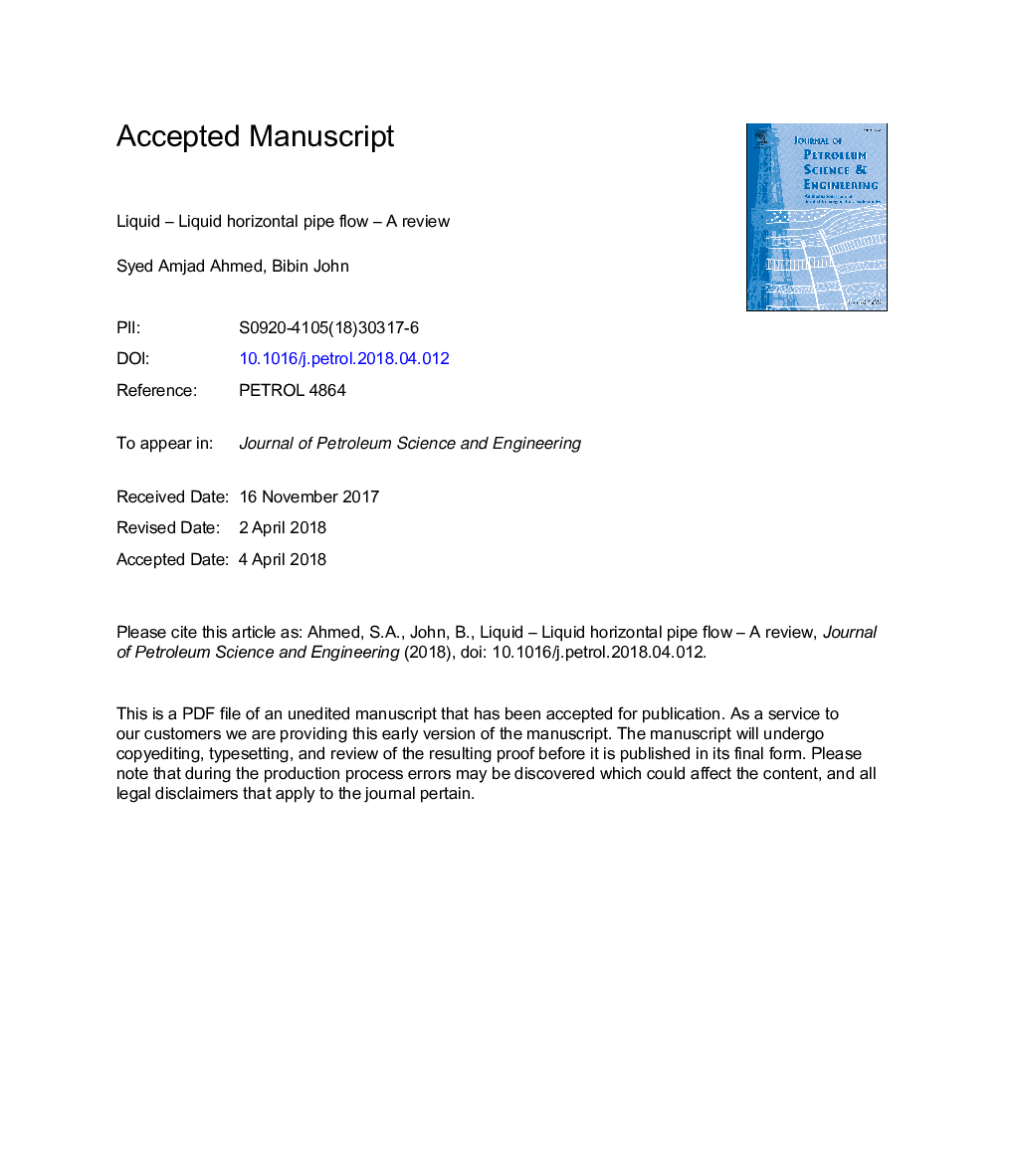| کد مقاله | کد نشریه | سال انتشار | مقاله انگلیسی | نسخه تمام متن |
|---|---|---|---|---|
| 8124724 | 1522773 | 2018 | 71 صفحه PDF | دانلود رایگان |
عنوان انگلیسی مقاله ISI
Liquid - Liquid horizontal pipe flow - A review
ترجمه فارسی عنوان
مایع - مایع جریان لوله افقی - بررسی
دانلود مقاله + سفارش ترجمه
دانلود مقاله ISI انگلیسی
رایگان برای ایرانیان
کلمات کلیدی
جریان لوله افقی مایع، انتقال گرما، گرادیان فشار، الگوهای جریان،
موضوعات مرتبط
مهندسی و علوم پایه
علوم زمین و سیارات
زمین شناسی اقتصادی
چکیده انگلیسی
This paper presents a comprehensive review of investigations on liquid-liquid flow through horizontal pipes. Characteristics like flow pattern, pattern transition including phase-inversion, pressure gradient across the flow, effective viscosity and heat transfer are discussed. Developments through experimental investigations and the analytical model formulations on these phenomena are presented. Various methodologies, in the literature, to characterize the flow pattern maps of immiscible liquid-liquid flow, like the customary superficial (volume) velocity (Q/A), superficial (mass) velocity/mass-flux (m/A) and non-dimensional parameter (Rem/Eo) are also discussed. An analysis of experimental data from literature to study the flow pattern using momentum of the fluid phases is performed. It is noted that the flow pattern characterization using mass-flux or momentum of the fluid phase(s) is more discerning than by using superficial (volume) velocity. The analysis also indicates that, irrespective of the flow pattern, the fluid phase with higher momentum behaves as dominant fluid phase of the flow system. In summary, the review of the literature on liquid-liquid horizontal pipe flow reveals: (i) a standard methodology to describe and distinguish flow patterns and its transition is required to be developed; (ii) classification of flow patterns using momentum based parameter would facilitate in defining the dominant fluid phase of the system rather than customarily used superficial (volume based) velocity; (iii) asymmetry during phase-inversion observed in the literature do not exist when data is analyzed using mass-velocities; (iv) Reynolds stress of the fluid phases indicates that the denser phase turbulence gets delayed due to the oil phase and this phenomenon needs investigation. This would further facilitate comprehension of the interfacial interactions of the fluid phases; (v) investigation of evolution of large-scale coherent fluid structures and its interfacial interactions would also make possible in developing appropriate closure relations required for enhanced compatibility of models and experimental data; (vi) currently available empirical convective heat transfer relations do not corroborate with the experimental data. Further research is required to develop improved two-phase convective heat transfer models.
ناشر
Database: Elsevier - ScienceDirect (ساینس دایرکت)
Journal: Journal of Petroleum Science and Engineering - Volume 168, September 2018, Pages 426-447
Journal: Journal of Petroleum Science and Engineering - Volume 168, September 2018, Pages 426-447
نویسندگان
Syed Amjad Ahmed, Bibin John,
